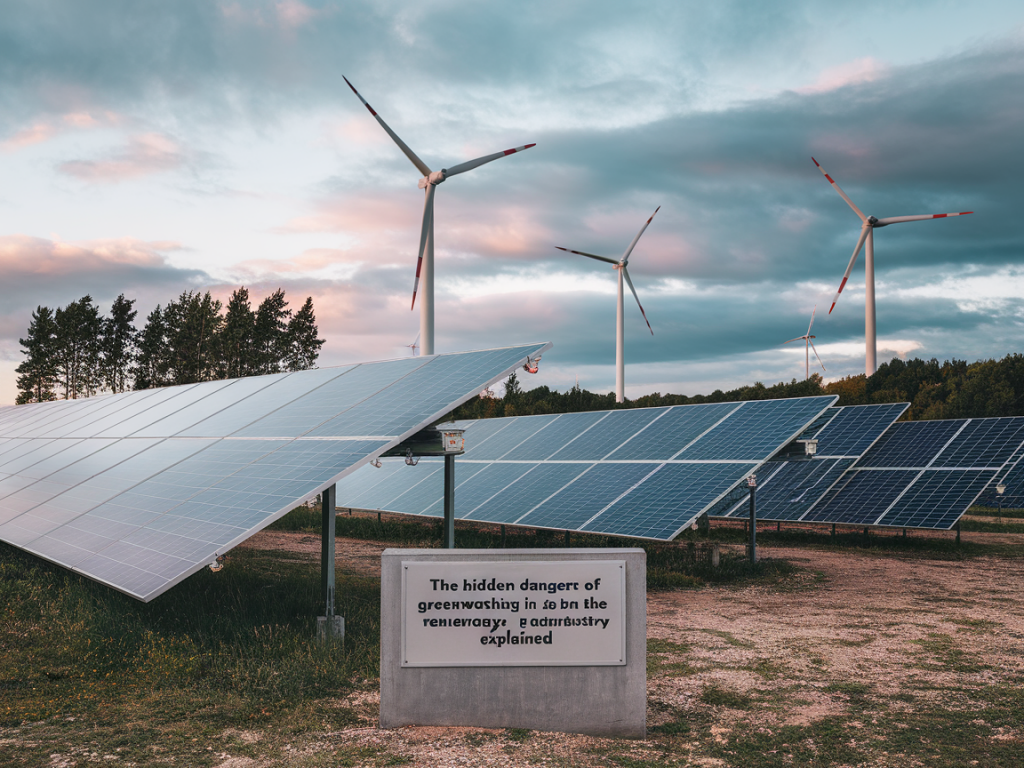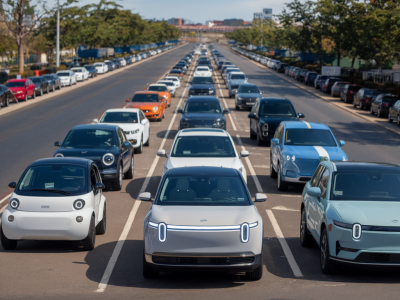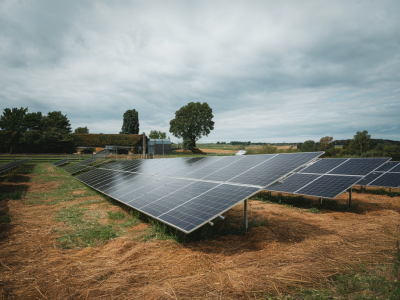
In the renewable energy sector, where the ideals of sustainability and environmental stewardship shine brightly, a shadowy issue often lurks beneath the surface—greenwashing. This term refers to the practice of overhyping or falsely portraying products, services, or companies as more environmentally friendly than they truly are. If you're wondering how this plays out in an industry purportedly dedicated to saving the planet, you're not alone. Let me walk you through the hidden dangers of greenwashing and explain why it's a growing concern in the renewable energy world.
What Exactly Is Greenwashing?
Greenwashing is not always as blatant as claiming something false, like saying a gasoline-powered generator is "100% green." Often, it involves using clever marketing to exaggerate the environmentally friendly nature of a product or company. Buzzwords like "eco-friendly," "sustainably sourced," or "carbon-neutral" may pop up without any evidence or certifications to back them up.
In the renewable energy sector, greenwashing can take more subtle forms, making it harder to detect. For example, an energy company might tout its adoption of solar panels, wind farms, or other renewables, but the fine print reveals that these sources only account for a fraction of its energy production. Meanwhile, the majority of its operations might still rely on fossil fuels like coal or natural gas. This tactic gives a misleading impression of their environmental impact, hoodwinking well-meaning customers and investors who genuinely care about sustainability.
Why Is Greenwashing a Problem in Renewable Energy?
As someone deeply invested in the future of sustainable energy, I find greenwashing particularly troubling because it undermines trust and stalls genuine progress. Below are some of the critical dangers it poses to the renewable energy sector:
- Misleading Consumers: Many individuals and businesses want to make eco-conscious choices. However, greenwashing deceives them into supporting companies or products that don’t genuinely align with their values. For instance, a business might invest in what they think is 100% green electricity, only to find out later that most of it comes from non-renewable sources.
- Hindering Real Innovation: By creating a façade of environmental effort, greenwashing diverts attention and investment from genuine solutions. Companies engaging in this practice may be less likely to invest in meaningful, long-term changes.
- Environmental Harm: When companies greenwash their operations, they often continue unsustainable practices behind the scenes, which may harm the environment in ways customers aren't aware of. For instance, promoting biofuels as "green" while they contribute to deforestation or food shortages falls under this category.
- Loss of Public Trust: Once greenwashing is exposed, it damages public trust not just in the offending company but in the renewable energy industry as a whole. This skepticism can discourage people from supporting sustainable initiatives altogether.
Real-Life Examples of Greenwashing in Energy
Greenwashing is not hypothetical—it's a very real issue. Let’s look at a few real-world examples to illustrate the problem.
Big Oil's Questionable "Green Projects": Major oil companies like BP and Shell have launched high-profile campaigns emphasizing their renewable energy investments. However, investigations have shown that only a small percentage of their budgets—sometimes less than 5%—actually goes toward renewables. The majority still supports oil exploration and extraction.
Carbon Neutral Claims: Some companies claim to be "carbon neutral" by buying carbon offsets rather than cutting their own emissions. While offsets can be part of the solution, they should never be used as a get-out-of-jail-free card for polluters. It's a mere band-aid over systemic issues that require more fundamental action.
Paying Lip Service to Sustainability: A number of energy firms have been found guilty of announcing renewable energy goals without setting measurable, binding targets. In some cases, they delay real action to meet these goals, banking on vague futures instead of concrete, immediate changes.
How to Spot Greenwashing in Renewable Energy
With greenwashing often hiding behind smoke and mirrors, it's crucial to be able to identify it. Here are some red flags and tips to help you recognize it:
- Vague Claims: Be wary of broad statements like "eco-friendly" or "green energy" without detailed explanations or certifications. Check for industry-recognized labels, such as the Renewable Energy Guarantees of Origin (REGO) in the UK or Green-e Energy Certification in the U.S.
- Lack of Transparency: Legitimate companies are usually open about their supply chains, energy mixes, and environmental impact. If you can’t find this information, consider it a warning sign.
- Focus on Marketing Over Metrics: Pay attention to how much weight companies place on "storytelling" as opposed to hard data. For example, if a company spends more on advertising its green initiatives than on implementing them, there’s likely a problem.
- Token Renewable Projects: Some organizations will spotlight a single green project to claim broader environmental credibility. Look at their overall operations to gauge whether these claims hold up.
What Can We Do About It?
If greenwashing makes you feel disheartened, don’t lose hope—there are plenty of ways you can combat it as a consumer, business owner, or policymaker. Here are a few actionable steps to consider:
- Demand Accountability: As consumers, we have the power to challenge misleading claims. Ask energy providers to lay their cards on the table and provide clear evidence of their sustainability efforts.
- Support Transparent Companies: Vote with your wallet by choosing companies that are genuinely committed to sustainability and back their claims with data. Look for certifications and independent audits.
- Stay Informed: Knowledge is power. Follow platforms like Energy News to stay up-to-date on which companies and technologies are leading—or lagging—in the green transition.
- Advocate for Policy Changes: Some forms of greenwashing could be mitigated through stricter regulations and mandatory disclosures. Support efforts to create policies that hold companies accountable for deceptive practices.
In the end, spotting and addressing greenwashing is not just about calling out bad behavior—it's about guiding the renewable energy industry back to its roots: genuine sustainability. By staying vigilant and informed, we can push for the change we want to see in the world.

